In the ecommerce and DTC universe, 2022 feels like 2030. The pandemic accelerated nearly a decade of ecommerce evolution in just a few months. As the world is again open for business, it’s anything but business as usual. Omnichannel is omnipresent.
In this blog post, we discuss why omnichannel is the way ahead for all DTC brands and how you can strategize your omnichannel journey. Read on to know 5 simple methods to develop omnichannel strategy….
Acceleration of Omnichannel
In a matter of months during the height of the pandemic, legacy consumer packaged goods (CPG) companies, such as Heinz began selling online for the first time. From direct-to-consumer (DTC) product bundles to curbside pickup, an omnichannel approach allowed these companies to continue selling despite national and international lockdowns, travel bans, and shipping delays.
The omnichannel experience is more than giving consumers many options to buy: the true power of omnichannel is realized when channels work together in harmony to immerse consumers in a highly personalized experience that also knows and considers the stage of the buying cycle they are at.
The omnichannel experience should feel so seamless that the consumer can hop or skip from one channel to another without realizing their movement through their customer journey.
So, maybe it’s time we rechristen ecommerce as omni commerce!
What is omnichannel strategy?
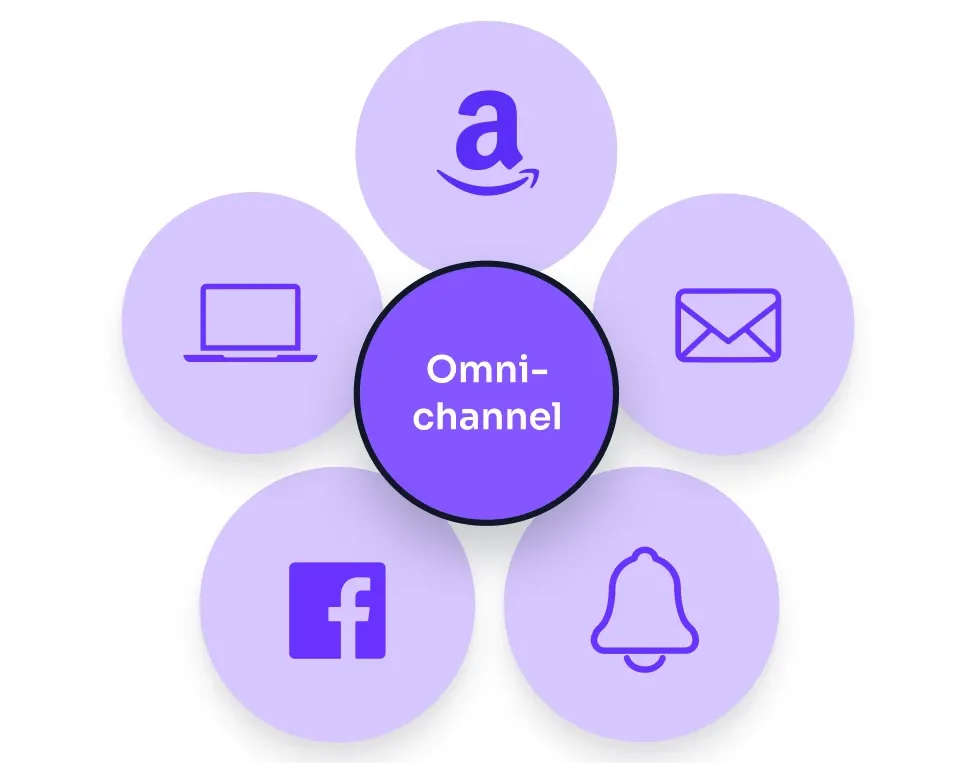
In the ecommerce and DTC universe, omnichannel strategy is a fully integrated approach that provides shoppers a unified experience across all channels or touchpoints:
- Your own ecommerce website and app
- Ecommerce marketplaces, such as Amazon, eBay, etc.
Within these digital properties, you have the following marketing channels:
- SMS
- Website (push notifications, banner pop-ups, chat, etc.)
- Mobile app (push notifications, in-app messaging, chat, etc.)
- Advertising (social marketing, retargeting, and sales on Facebook, Instagram, Pinterest, etc.)
Omnichannel strategy doesn’t need you to be everywhere – just everywhere your customers are. It involves integrating each touchpoint to offer customers exactly what they need, when they need it, on any device.
Incentives to adopt omnichannel
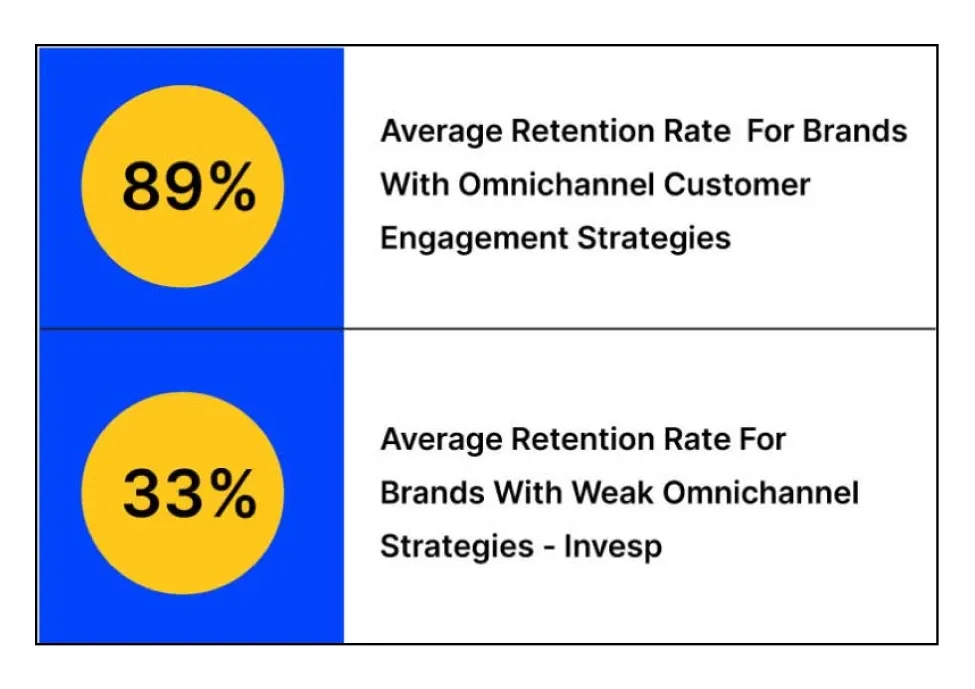
Only those brands with the right plan and execution reap these rewards, but the majority of brands haven’t prioritized omnichannel commerce.
Well, this is your opportunity: the consumer expects a seamless buying experience across channels. Their expectation makes it your responsibility to optimize their consumer experience on the most relevant sales channels, based on their shopping behavior.
You should adopt omnichannel now as commerce is rapidly becoming channel agnostic, which gives consumers the choice of where, when, and how to purchase.
Brands that deliver will take market share, earn loyalty, and scale faster.
How to develop an omnichannel strategy
Getting all touchpoints across devices, channels, and platforms to be unified is the main hurdle in implementing an omnichannel strategy.
1) Set up a modern data & analytics tech stack
The good news is that you’re not the first to do it; you can use third-party tools and solutions, such as a CDP. And once it’s up and running, you can start finding answers to the big question: what parts of my marketing and advertising strategy are actually working?
To deliver a unified shopping experience to customers, most industry giants rely on CDP solutions to track the effectiveness of sales and marketing efforts.
With data visualization, it’s easy to keep an eye on all marketing efforts across all channels, figure out what’s really going on on different platforms, and take action right away if needed.
As you may already have understood, omnichannel marketing analytics is all about data. But, data silos and data centralization are the second-largest roadblocks on the road to a wholesome omnichannel marketing strategy:65% of marketers experience problems with data centralization.
So, you need to first collect data on who is visiting your site/other touchpoints, how they got there, and whether they convert.
Before you can analyze data, it has to go through a process called ETL, which stands for “extract, transform, load.” The first step is to get the data from different sources, then change it into a new format, and finally put it into a data warehouse.
You need four main ingredients to cook the perfect omnichannel strategy:
- You should be able to predict what’s going to happen next. More or less. Almost always. 🙂
- You should be able to monitor your customer and marketing activities in real-time via dashboards.
- You should be able to ETL customers historical and profile-related information along with their real-time behavioral data from your website and app, email campaigns, social media, customer reviews/feedback/ratings, support tickets or claims, etc.
- Make cohorts, segments, and workflows that help you see successes and problems quickly and take action right away.
2) Analyze the customer journey
Recognizing how consumers discover your brand, consider it in their purchase decision, choose to buy, and ultimately become repeat customers is the foundation for any strong omnichannel strategy.
Know where your customers already are
Find out what platforms, media, and devices your customers use every day. This includes where they like to shop, where they like to hang out, and what experiences and events drive them every day.
Up to 73% of shoppers use multiple channels, taking an increasingly non-linear path to purchase. Whether it’s offline to online, vice versa, or a mix of the two, channel hopping is the new norm.
For instance, if you find out that none of your consumers use Pinterest, there’s no need to waste your time and effort on it. So, don’t guess. Instead, continuously research and analyze.
Zero in on your consumers zero moment(s) of truth (ZMOT)
The ZMOT refers to the moment in the buying process when the consumer researches a product prior to purchase.
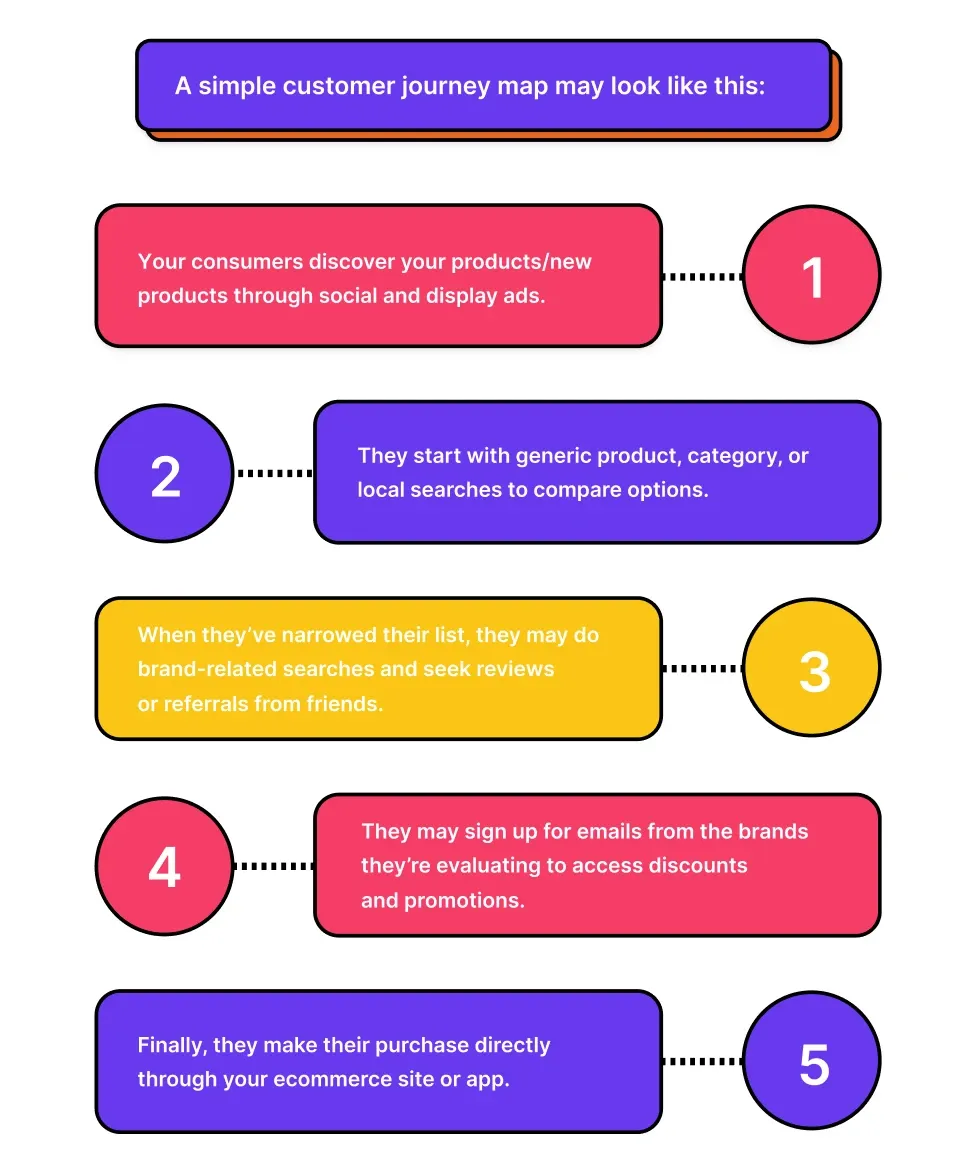
Note how the majority of the buying decision may have happened before a consumer lands on your site or even discovers your brand/products, and yes, they may interact multiple times with multiple touchpoints.
Identify the top conversion paths
A quick way to figure out popular channels for your brand is by identifying the top conversion paths by using your analytics stack.
There you can see the specific channels that are driving people to your site. In simple words, you can see how customers are discovering and interacting with your brand.
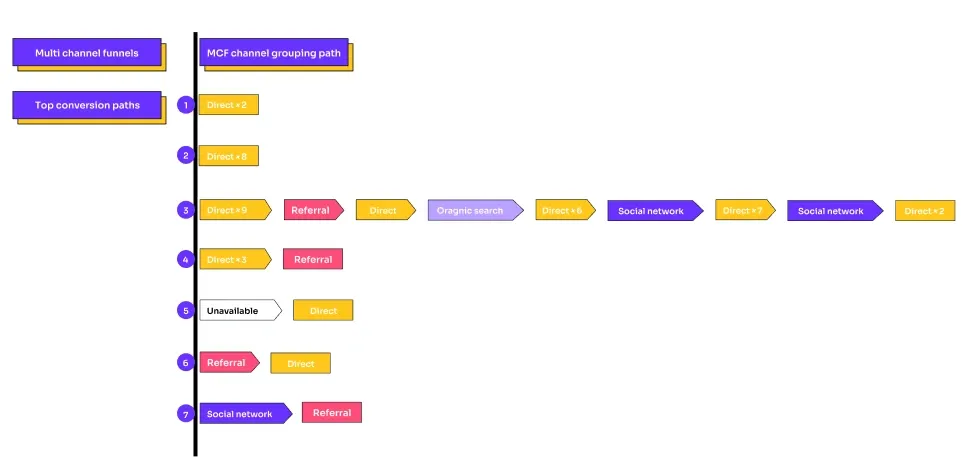
Identifying where your customers come from before they land on your site or app is crucial. Use appropriate reports in your analytics stack to map your customer’s pre-purchase journey.
By looking over this information, you’ll get a general idea of the most important touchpoints for your business.
Once you know which platforms you want to simplify or improve, you should build on that knowledge to create an omnichannel buying experience.
The secret sauce is to turn every digital touchpoint into customer action.
3) Make every touchpoint shoppable
Yes, you read it right: make each touchpointshoppable.
If someone puts an item in their cart on your website, it needs to be in their cart on your mobile app as well. If they go to Facebook, they should see products they might be interested in based on what they looked at before.
You should also bridge the gap between multiple online touchpoints, such as websites, email, chats, mobile notifications, Instagram Messenger, etc.
Customers want to connect with your brand across all channels and touchpoints seamlessly without having to provide you with already provided information.
A customer can go from keyword search to product location to reviewing it on Instagram and other sites online before buying it from your app or website while hitting multiple, interconnected touchpoints in the process.
Ideally, all touchpoints should enable “Buy Now” and one-click payment if possible. For instance while evaluating your product, a customer may ask for a discount via your Instagram handle and you can automate your response(s) to make this touchpoint shoppable without the customer having to visit your website or app post the interaction:
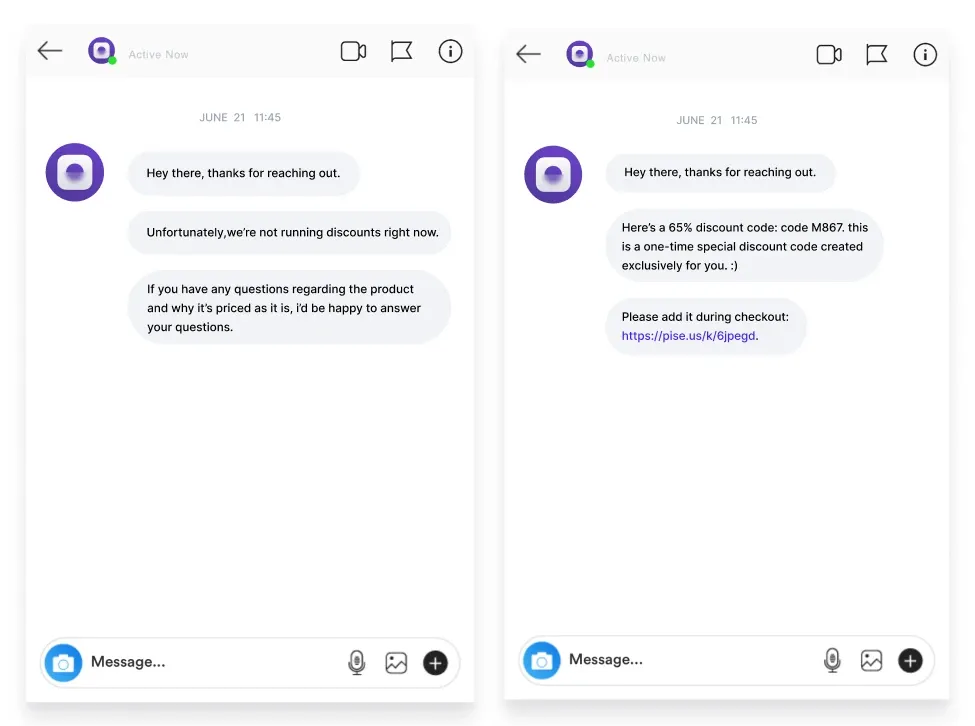
Just a jumping off point; take flight now
An IDC study found that customers whose purchases can be made through any channel have a 30% higher lifetime value.
A good omnichannel strategy doesn’t focus on a single place where the customer will end up. You shouldn’t make it your goal to make sales on just one platform. Instead, sales should be able to happen naturally on every platform and fit together perfectly.
Long-term growth can be hurt if you only use one or two platforms and don’t have smooth integration across multiple touchpoints/channels.
Sign up for early access to Lifesight’s latest offering that seamlessly executes your unified omnichannel marketing strategy
You may also like
Essential resources for your success

























































